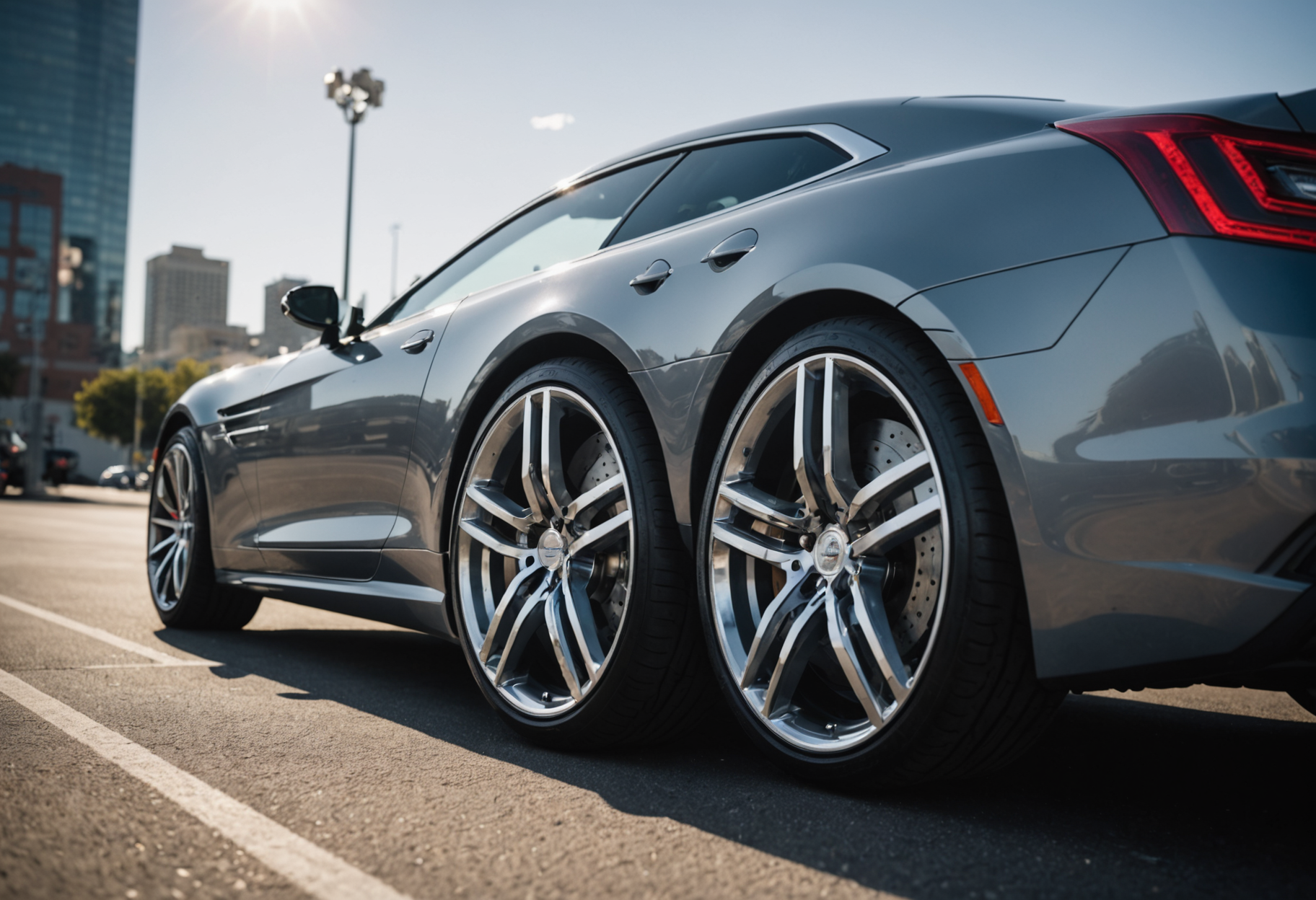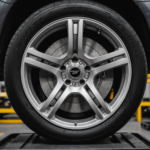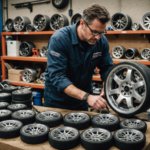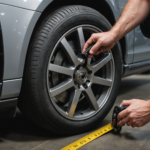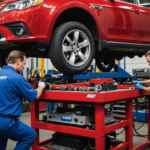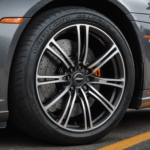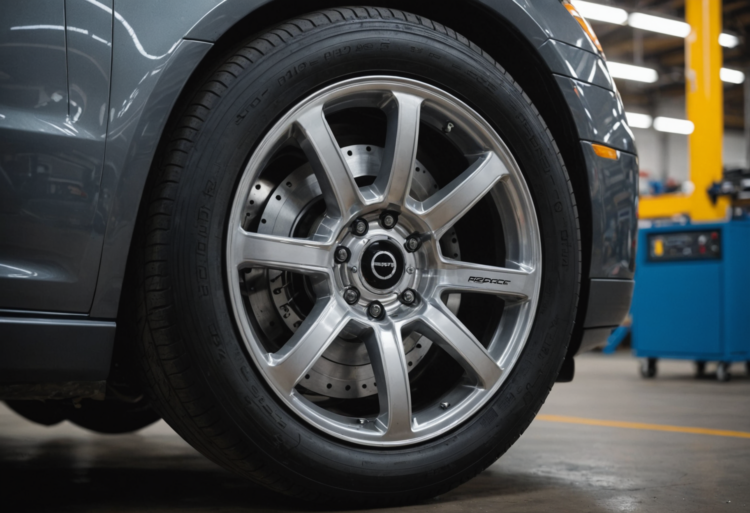When it comes to upgrading or customizing a vehicle’s wheels, enthusiasts and casual drivers alike often focus on aesthetics, performance, and handling. One critical aspect that is frequently overlooked, however, is wheel offset. Understanding wheel offset can mean the difference between a flawless fit and an unwanted compromise in performance and safety. This article delves into what wheel offset is, its significance in fitment, how it affects various driving dynamics, and what to consider when selecting the right wheel offset for your vehicle.
What is Wheel Offset?
Wheel offset refers to the distance between the centerline of the wheel and the mounting surface of the wheel, which is where the wheel attaches to the hub of the vehicle. This measurement is crucial in determining how a wheel will fit within the wheel arch of a car. It is expressed in millimeters and can be classified into three main categories:
- Positive Offset: When the mounting surface is farther away from the centerline towards the front of the wheel. This is common in modern vehicles and helps keep the wheels tucked under the fenders.
- Negative Offset: When the mounting surface is closer to the centerline, positioning the wheels further outwards. This creates a more aggressive stance and is often desired in performance cars.
- Zero Offset: When the mounting surface is aligned with the centerline of the wheel, creating a balanced wheel position.
Why Wheel Offset Matters
Understanding wheel offset is not just a matter of aesthetics; it significantly impacts vehicle safety, handling, and overall performance. Here are some reasons why wheel offset matters:
1. Handling and Stability
The offset of a wheel affects the vehicle’s center of gravity and track width, which influences handling characteristics. A wheel with excessive positive offset can lead to understeering, while negative offset might increase oversteering tendencies. By ensuring that the wheel offset is appropriate for the vehicle, the handling dynamics can be optimized for better performance.
2. Clearance Issues
Choosing the wrong offset can result in clearance issues with suspension components, brake calipers, and the inner fender. This may lead to rubbing or interference, especially under load or during cornering. To avoid this, it is crucial to select an offset that provides adequate clearance while maintaining desirable aesthetics.
3. Tire Wear
Improper wheel offset can lead to uneven tire wear. Positive offset wheels might cause the tires to wear out on the inner edge, while negative offset can lead to wear on the outer edge. This not only affects the lifespan of tires but can also lead to compromised safety.
How to Calculate Wheel Offset
Calculating wheel offset involves measuring the distance from the centerline of the wheel to the mounting surface. Here’s a simple formula to calculate offset:
Offset (mm) = (Backspacing – Width of Wheel/2)
Where backspacing is the distance from the mounting surface to the inner edge of the wheel, and the width of the wheel is measured from bead seat to bead seat. Here’s a practical breakdown:
- Step 1: Measure the backspacing by using a straight edge to measure from the back of the wheel to the mounting surface.
- Step 2: Measure the width of the wheel.
- Step 3: Insert the measurements into the formula to find the offset.
For example, if a wheel has a backspacing of 5 inches (or 127 mm) and a total width of 8 inches (or 203 mm), the calculation would be:
Offset (mm) = 127 mm – (203 mm / 2) = -7 mm
Recommended Wheel Offset Based on Vehicle Type
Different types of vehicles require specific offsets for optimal performance. Here’s a guide that outlines recommended offsets based on popular vehicle types:
| Vehicle Type | Recommended Wheel Offset Range (mm) |
|---|---|
| Compact Cars | 35 – 45 |
| Midsize Cars | 45 – 55 |
| Full-Size Cars | 30 – 50 |
| Crossover SUVs | 35 – 50 |
| Pickup Trucks | 0 – 30 |
| Performance Cars | -5 – 25 |
The Impact of Wheel Offset on Suspension Geometry
Altering wheel offset can also affect suspension geometry, leading to performance-related consequences. Here are the key areas impacted:
1. Camber Angle
Changes in offset can modify camber angles, which is the angle between the wheel and the vertical axis of the vehicle. A shift in camber can influence tire grip, stability during cornering, and overall handling.
2. Steering Response
Steering response can also be affected by wheel offset. A more positive offset may result in quicker steering, while negative offset might slow down response time. This is particularly important in high-speed scenarios.
3. Load Distribution
Changing the wheel offset adjusts where the weight of the vehicle is distributed across the wheels. This can significantly impact load transfer and cornering performance, making it essential to choose an appropriate offset when aftermarket wheels are installed.
Considerations for Choosing the Right Wheel Offset
When selecting the right wheel offset for a vehicle, several critical factors must be considered:
- Vehicle Specifications: Always consult the manufacturer’s specifications for the model and year of the vehicle. This ensures that the recommended offsets are adhered to.
- Intended Use: Consider how the vehicle will be used. For daily driving, a different offset might be preferable compared to a vehicle that will be used for racing or off-roading.
- Wheel Size: The size of the wheel (diameter and width) will impact the required offset. Larger wheels generally require adjustments in offset to maintain proper fitment.
- Suspension Setup: If a vehicle has been modified with aftermarket suspension components, the required offset may change accordingly. It’s vital to consider how the wheel offset interacts with new suspension geometry.
- Visual Preference: Each driver has their aesthetic preferences. Many choose offset based on the stance, but this should always align with performance and safety.
Conclusion
Choosing the correct wheel offset is imperative for achieving an optimal fitment that enhances performance, safety, and overall driving enjoyment. Knowledge of how offset interacts with vehicle dynamics, suspension geometry, and clearance will allow car enthusiasts to make informed decisions when upgrading their wheels. By putting thought into the selection process, drivers can enjoy the full benefits of their custom wheels while ensuring their vehicle remains safe and responsive.
In conclusion, wheel offset is not just a technical specification; it is an essential element that affects every aspect of a vehicle’s performance and fitment. Understanding it can help car owners make the right choices, enhancing both the aesthetic appeal and functional capabilities of their vehicles.

